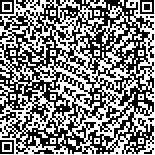扈罗曼、朱其秀、刘云霞、林延敏、汤乃苏、苏文华、王杰、王开乐.重复经颅磁刺激联合康复训练治疗非痴呆型血管性认知障碍的疗效观察[J].中华物理医学与康复杂志,2016,38(4):278-282
扫码阅读全文

|
| 重复经颅磁刺激联合康复训练治疗非痴呆型血管性认知障碍的疗效观察 |
|
| |
| DOI: |
| 中文关键词: 经颅磁刺激 康复训练 非痴呆型血管性认知障碍 |
| 英文关键词: Repetitive transcranial magnetic stimulation Rehabilitation training Vascular cognitive impairment but no dementia |
| 基金项目: |
|
| 摘要点击次数: 4908 |
| 全文下载次数: 6831 |
| 中文摘要: |
| 目的 探讨重复经颅磁刺激(rTMS)联合康复训练对非痴呆型血管性认知障碍(VCIND)患者认知功能的影响。 方法 共选取VCIND患者60例,采用随机数字表法将其分为rTMS组及对照组,每组30例。2组患者均给予常规药物治疗(如控制血压、血糖、调节脂代谢、营养脑神经及改善微循环等)及康复训练(如物理疗法、作业疗法及认知训练等),rTMS组在此基础上辅以经颅磁刺激治疗,采用CCY-I型经颅磁刺激仪,磁刺激部位为左侧前额叶背外侧,磁刺激频率为10Hz,刺激强度为患者100%运动阈值水平,每日给予3000个脉冲刺激,治疗5d为1个疗程,每个疗程间隔2d,共治疗4个疗程。于治疗前、治疗4周后分别采用简易精神状态量表(MMSE)、蒙特利尔认知评估量表(MoCA)及改良Barthel指数(MBI)量表评定2组患者认知功能及日常生活活动(ADL)能力改善情况,同时于上述时间点检测2组患者事件相关诱发电位P300潜伏期及波幅。 结果 治疗前2组患者P300潜伏期、波幅及MMSE、MoCA、MBI评分组间差异均无统计学意义(P>0.05)。治疗后2组患者P300潜伏期均较治疗前缩短,波幅均较治疗前增加(P<0.05);并且rTMS组P300潜伏期[(344.48±20.10)ms]亦显著短于对照组(P<0.05),波幅[(8.49±1.49)μV]则明显大于对照组(P<0.05)。治疗后2组患者MoCA总分、MMSE及MBI评分均较治疗前有所改善(P<0.05),但2组患者MoCA抽象概括、定向评分均较治疗前无明显改善(P>0.05);治疗后rTMS组MoCA总分[(23.47±1.53)分]、MMSE评分[(22.50±1.53)分]及MBI评分[(80.17±4.04)分]亦显著优于对照组(P<0.05)。 结论 与单纯康复训练比较,rTMS联合康复训练能进一步改善VCIND患者认知功能及ADL能力,该联合疗法值得临床进一步推广、应用。 |
| 英文摘要: |
| Objective To explore the effect of repetitive transcranial magnetic stimulation (rTMS) together with rehabilitation on the cognitive functioning of patients with vascular cognitive impairment but no dementia (VCIND). Methods Sixty patients with VCIND were randomly divided into an rTMS group and a control group using a random number table, each of 30. Both groups were given routine drug treatment including controlling their blood pressure and blood sugar, regulating the metabolism of lipids, nerve nurturing and circulation improvement. They also received conventional rehabilitation training consisting of physical therapy, occupational therapy and cognitive training. The rTMS group was additionally given rTMS using the CCY-type I transcranial magnetic stimulator over the left dorsolateral prefrontal cortex (DLPFC) at 10 Hz, 3000 pulses per day at their individual motor thresholds on weekdays for 4 weeks. The cognitive functioning and ability in daily life (ADL) of both groups was assessed using the mini-mental state examination (MMSE), the Montreal cognitive assessment (MoCA) and the modified Barthel Index (MBI) before and after the treatment. The P300 latency and amplitude of both groups were also measured. Results Before the treatment, no significant differences were found in any of the measurements (P>0.05). After the treatment, the average P300 latency and amplitude of both groups were better than before treatment (P<0.05). Compared with the control group, the P300 latency of the rTMS group was significantly shorter [(344.48±20.10) ms] (P<0.05) but the amplitude was significantly greater [(8.49±1.49)μV] (P<0.05). After treatment the average MoCA, MMSE and MBI scores had increased significantly in both groups, but with significantly better increase in the rTMS group than in the control group, However, no significant improvement was observed in the MoCA abstract generalization or orientation results of either group, Conclusion Supplementing conventional rehabilitation with rTMS is more effective in improving cognition and ADL performance. It is worth applying in clinical practice. |
|
查看全文
查看/发表评论 下载PDF阅读器 |
| 关闭 |
|
|
|